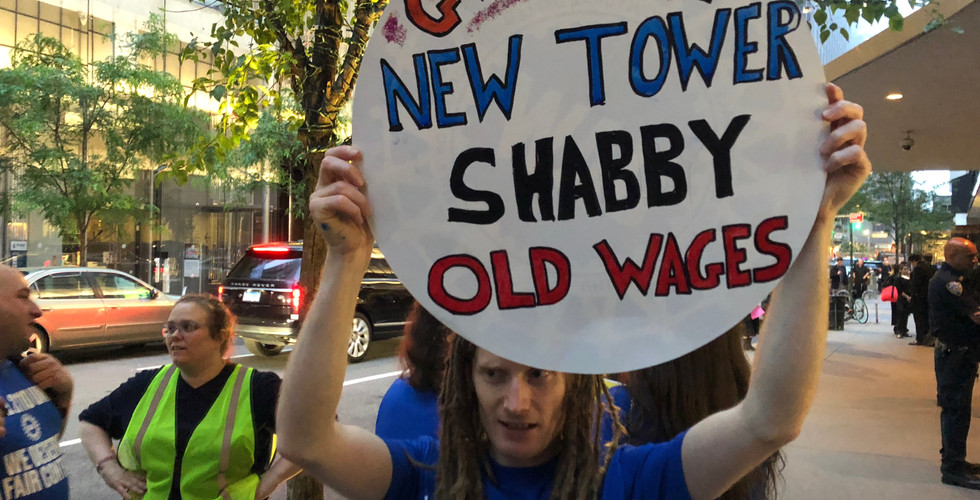An Expanding Museum Needs to Expand Benefits
- Alessandro Berni

- Jun 11, 2018
- 2 min read
Last week, about 100 supporters of the UAW Local 2110 crowded 57th st. in New York City carrying signs that read “Modern art, ancient wages” and “Shiny new building, shabby old wages.” The occasion was the Museum of Modern Art’s annual “Party in the Garden” fundraising event, a dinner that ended with a performance by indie rock heavyweight St. Vincent. “Negotiations have come to a standstill,” Athena Holbrook, a Collection Specialist at MoMa and a member of Local 2110’s bargaining committee, had told the art blog Hyperallergic.
Negotiations resumed the evening of the following Monday. At contention is the museum administration’s proposal to eliminate seniority step raises and its refusal to expand its medical coverage among its employees. The contract between the museum and the union that represents its 215 unionized employees, last negotiated in 2015, expired. Also being negotiated is the museum’s practice of hiring temporary employees who do not to be given benefits and to secure job rights for curatorial assistants, who are able to be terminated after four years, if they are not promoted to a hire position at the museum, which, Holbrook told me, often doesn’t happen.
Highlighting these tensions reveals MoMa to join the number of nonprofit organizations facing organized internal dissent amid lavish expansion plans. Last year, the museum announced a $450 million renovation and expansion in order to increase gallery space by 30%. Some of this is being done in order to correct a $858 million reconfigurations of the museum in 2004 that resulted in “congestion and overcrowding” with Jerry Saltz,, senior art critic for New York, notoriously blasting MoMA as: “the greatest collection of modern art in the world in the worst conditions.” The museum also faces increased competition from the relocated and redesigned Whitney and the Met Breuer, the new modern art museum that took its spot and is run by the Met.
A similar protest occurred in 2015, during the last contract negotiations between the museum and the Local 2110. The same annual event was picketed and the complaints remained the same: “They’re trying to shift the cost burden of healthcare on to us.” Grace Kwon had told the Guardian at the time. It was the first major employee protest at the museum since the union called a strike in 2000, which lasted 134 days.
Negotiations after the protest in 2015 managed to find compromise where employees received a 3% or $2,500 raise. Now, citing growing costs, the museum is attempting to cut automatic raises, which represent some of the only pay increases for many of the museum’s employees. Early attempts at an agreement the week after the protest proved inconclusive and Holbrook says the union will consider next steps if MoMA doesn’t offer concessions soon.
















Comments